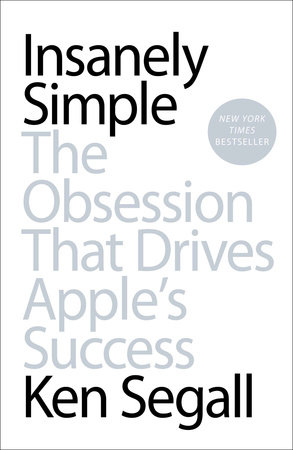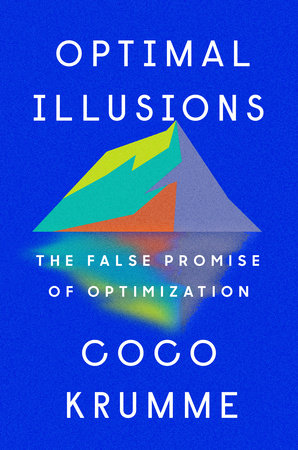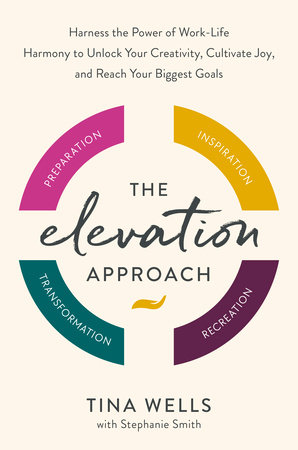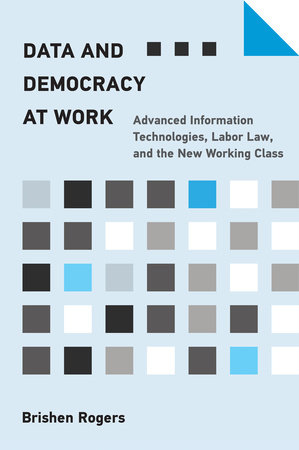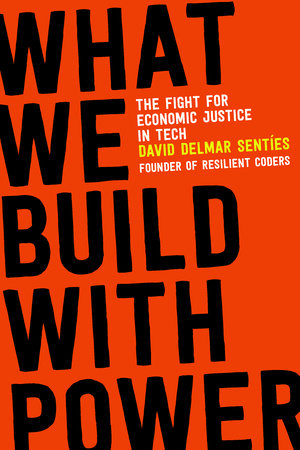Quick Summary
One Sentence Summary
“Insanely Simple” by Ken Segall dives into the power of simplicity in business, drawing insights from Apple’s success under Steve Jobs.
Big Idea
The central theme of “Insanely Simple” is that simplicity isn’t just a design principle; it’s a driving force behind innovation, efficiency, and exceptional success, particularly showcased in Apple’s approach to business and product design.
Five Key Ideas
- Simplicity as a Culture: Simplicity isn’t just a practice but a culture that needs to be cultivated and maintained.
- Decision-Making: The book illustrates how streamlined decision-making can lead to better and faster outcomes.
- Focus on Essentials: It stresses the importance of focusing on essentials, eliminating unnecessary complexities in products and processes.
- Brand Identity: The book explains how simplicity in branding and marketing can create a powerful and memorable identity.
- Leadership and Vision: It emphasizes the role of leadership in fostering a culture of simplicity, with Steve Jobs as a prime example.
Actionable Advice
- Eliminate the Unnecessary: Constantly evaluate processes, meetings, and features in your work or product, and eliminate anything that doesn’t add value.
- Foster Clarity: Encourage clear, jargon-free communication within your team or organization.
- Be Decisive: Make decisions swiftly and confidently, avoiding unnecessary deliberation.
About the Author
Ken Segall is a creative director and brand consultant who worked closely with Apple and Steve Jobs. His experiences with Apple heavily influence his insights into the power of simplicity.
Read Next
For deeper insights into Apple and Steve Jobs, consider “Steve Jobs” by Walter Isaacson. To explore simplicity in design, “The Design of Everyday Things” by Don Norman is a great choice. For a broader understanding of simplicity in business strategy, “Good Strategy Bad Strategy” by Richard Rumelt is a valuable read.
In Depth
Simplicity as a Culture
Simplicity in an organization isn’t just a policy; it’s a cultural identity. Ken Segall stresses this in “Insanely Simple,” using Apple as the quintessential example. Apple, under Steve Jobs, didn’t just use simplicity as a tool; it was woven into the very fabric of the company’s culture. Every process, every product, every decision was viewed through the lens of simplicity.
Segall recounts how Jobs’ obsession with simplicity impacted everything. The company meetings are a prime example. Jobs believed that more people in a meeting equated to less efficiency. He famously insisted on small, focused gatherings. Segall shares an anecdote where Jobs interrupted a meeting, questioning every person’s presence to ensure only those crucial to the discussion remained.
This cultural insistence on simplicity went beyond meetings. Product design at Apple reflects this too. The simplicity in Apple’s product lineup contrasts starkly with companies offering a plethora of confusing options. Apple’s choice to limit its product range was a direct result of this cultural ethos. The company focused on perfecting a few products rather than diluting efforts across many. This approach demanded tough decisions and discipline, but it paid off by creating products that resonated deeply with consumers.
Simplicity as a culture also extends to communication. Apple’s internal and external communication is known for being clear, direct, and devoid of corporate jargon. This clarity is a deliberate choice, ensuring that messages are easily understood and decisions are not muddied by unnecessary complexity.
Segall captures this ethos with a poignant quote:
“Simplicity isn’t just a visual style. It’s not just minimalism or the absence of clutter. It goes deeper than that, to the very way we think about and organize information.”
This statement underlines that simplicity isn’t just about aesthetics; it’s a mindset that influences how information is processed, decisions are made, and how communication is conducted.
The cultural embrace of simplicity at Apple created a ripple effect. It led to groundbreaking products, effective marketing, and a brand identity that stood out in a crowded marketplace. Segall argues that any organization, regardless of size or industry, can benefit from adopting this cultural focus on simplicity. It requires leadership commitment, a willingness to make tough decisions, and an unwavering focus on what truly matters.
In essence, “Simplicity as a Culture” is a powerful concept that goes beyond tactics or strategies. It’s about ingraining a philosophy into the DNA of an organization. It’s about leadership setting a tone that reverberates through every aspect of the business. Apple, under Steve Jobs, serves as a testament to the transformative power of this approach.
Decision-Making
Decisive and streamlined decision-making is crucial. In “Insanely Simple,” Segall highlights how Apple’s approach to decision-making, led by Steve Jobs, was starkly different from the norm. Jobs was known for his ability to make swift, confident decisions. This approach cut through bureaucracy and accelerated progress.
Apple’s decision-making process was intentionally simplified. Instead of prolonged deliberations and endless meetings, decisions were often made quickly, with a clear focus on the company’s core values. Jobs was not afraid to say no to ideas, even good ones, if they didn’t align with the company’s objectives. This ruthlessness in decision-making ensured that only the best, most relevant ideas survived.
A detailed example from the book involves the development of the original iMac. Jobs and the design team, led by Jony Ive, were working on multiple prototypes. Instead of laboring over minute details and indecisively weighing options, Jobs walked into the room, immediately gravitated towards one design, and said, “This is it.” This decisive moment set the course for what would become one of Apple’s most iconic products.
This anecdote reflects the decisiveness that was instilled in Apple’s culture. Jobs’ ability to make quick decisions was rooted in a clear vision and an unwavering commitment to simplicity. Segall quotes:
“When you think simple, you think with clarity. You cut to the essence of what you’re trying to accomplish and ignore everything else. When you think complex, you consider every possible ramification of every possible decision, and you’re likely to be paralyzed by indecision.”
The quote illustrates the power of thinking simply. It highlights how complexity can lead to indecision, whereas simplicity fosters clarity and decisiveness.
Apple’s decision-making process under Jobs was not just about speed; it was about clarity of purpose. Every decision was made with the end user in mind. Will this feature enhance the user’s experience? Does this align with our goals? Questions like these guided decisions, ensuring they were not just swift but also aligned with the company’s mission.
In today’s fast-paced world, the ability to make quick, informed decisions is more valuable than ever. Segall suggests that organizations can learn from Apple’s example. By simplifying decision-making processes, removing layers of bureaucracy, and focusing on core values, companies can make better decisions faster.
To sum up, decision-making in the spirit of simplicity is not about recklessness or impulsiveness. It’s about having a clear vision, understanding your goals, and having the confidence to make decisions that align with those goals. This approach can transform not just how decisions are made but also how an organization operates and succeeds.
Focus on Essentials
Focusing on essentials is pivotal. “Insanely Simple” emphasizes the importance of concentrating on what truly matters. In the realm of Apple, this meant stripping away the unnecessary, whether in product features, design elements, or business strategies.
One striking example from the book relates to the Apple product line. When Jobs returned to Apple in 1997, he found a confusing array of products. He simplified the entire line to just four products: a desktop and a portable for both consumers and professionals. This drastic reduction was a bold move, but it allowed Apple to focus intensely on a few products, ensuring they were exceptional.
Segall underscores this philosophy with a quote:
“Simplicity is about subtracting the obvious and adding the meaningful.”
This quote encapsulates the essence of focusing on essentials. It’s not just about removing features or products; it’s about refining and enhancing what is truly important.
By focusing on essentials, Apple could channel its resources and creativity into making a few products truly outstanding. This approach led to innovations and refinements that might have been impossible in a more cluttered and distracted environment.
This principle extends beyond product lines to every aspect of the business. In marketing, for example, Apple’s advertisements are known for being clean, focused, and direct. They highlight essential features and benefits, avoiding the trap of overloading the audience with information.
Focusing on essentials also means being willing to say no. Jobs was famous for his ability to reject ideas, even good ones, if they didn’t align with the company’s core objectives. This selective approach ensured that only the best, most relevant ideas were pursued.
In practice, focusing on essentials requires discipline. It’s easy to get caught up in adding features, expanding product lines, or pursuing new markets. But the discipline to stay focused on what is truly essential can lead to higher quality, better performance, and stronger brand identity.
For businesses and individuals alike, this key idea is transformative. It’s about honing in on what truly adds value and letting go of the rest. This clarity not only enhances efficiency and effectiveness but also allows for greater innovation and creativity within the defined parameters.
In conclusion, the focus on essentials is a fundamental principle of simplicity. It’s about doing fewer things but doing them exceptionally well. This approach, as demonstrated by Apple under Jobs, can lead to extraordinary success and innovation.
Brand Identity
Simplicity shapes brand identity. “Insanely Simple” delves into how Apple’s commitment to simplicity became its brand hallmark. This simplicity wasn’t just in product design; it permeated every aspect of Apple’s branding and marketing strategies.
A detailed example in the book is the “Think Different” campaign. This campaign encapsulated Apple’s brand identity in two words. It was simple yet powerful, resonating with consumers who saw themselves as creative, innovative, and different from the crowd. The campaign, with its clean, minimalist aesthetic and focus on impactful words and images, stood in stark contrast to the more complex and information-heavy ads of competitors.
Segall highlights the power of this approach with a quote:
“In the world of branding, simplicity is the ultimate sophistication.”
This quote underscores the sophistication that simplicity brings to a brand. It’s not about being basic or bare; it’s about being impactful, memorable, and clear in what the brand represents.
Apple’s brand identity, built on simplicity, created a strong emotional connection with consumers. The simplicity in Apple’s branding made it approachable and relatable. The clear, jargon-free language used in its marketing made the products seem accessible, not just to tech enthusiasts but to everyone.
Moreover, the focus on simplicity in branding allowed Apple to stand out in a crowded marketplace. In a sea of complex tech specifications and features touted by competitors, Apple’s straightforward and user-focused messaging was refreshing and appealing.
The principle of simplicity in brand identity extends beyond marketing campaigns. It’s reflected in product packaging, the design of Apple Stores, and even in the user interface of Apple products. Everything is consistent, clean, and focused on the essentials. This consistency reinforces the brand’s identity and values, making it instantly recognizable and distinctly Apple.
Creating a simple yet powerful brand identity isn’t just about aesthetics; it’s about clarity of purpose and values. It requires understanding what the brand stands for and communicating that in the most straightforward and compelling way possible.
In today’s fast-paced, information-saturated world, the simplicity in branding can be a significant differentiator. It can cut through the noise, capture attention, and create lasting impressions. This approach is not limited to tech companies; businesses in any sector can learn from Apple’s example.
In summary, the key idea of simplicity in brand identity is about distilling a brand to its essence and communicating that clearly and powerfully. As demonstrated by Apple, this approach can create a strong and enduring brand that resonates deeply with consumers.
Leadership Commitment
Leadership commitment to simplicity is non-negotiable. “Insanely Simple” underlines that for simplicity to permeate an organization, it must be championed from the top. Leadership must not only believe in the value of simplicity but also actively model and enforce it.
A compelling example in the book is Steve Jobs’ approach to product launches. Jobs was known for his detailed involvement in every aspect of Apple’s product launches, ensuring they were simple, clear, and focused. He meticulously reviewed every slide, every word, and every demo. This wasn’t micro-management; it was a commitment to ensuring that everything Apple did reflected the core value of simplicity.
Segall emphasizes this with a quote:
“Simplicity doesn’t happen on its own. It requires constant vigilance; a willingness to embrace change; the strength to say no, even when it’s easier to say yes.”
This quote captures the essence of leadership commitment to simplicity. It’s not a passive process; it requires active engagement and tough choices.
Jobs’ leadership style set a standard for simplicity throughout the company. His commitment influenced product design, marketing, internal communications, and decision-making. When leaders embody the principle of simplicity, it becomes a guiding force, shaping company culture and influencing every level of the organization.
Leadership commitment to simplicity also means prioritizing what’s important and eliminating distractions. Jobs was adept at identifying and focusing on the key aspects that would make a difference, ignoring extraneous details. This approach ensured that teams weren’t wasting time on minor issues but were instead focused on what truly mattered.
Furthermore, leadership commitment to simplicity involves making hard decisions. Jobs wasn’t afraid to kill projects, even popular ones, if they didn’t align with Apple’s vision of simplicity. This resolve to stay true to core values, even when it’s challenging, is a hallmark of leadership committed to simplicity.
For other organizations, the lesson is clear: simplicity must start at the top. Leaders need to set the tone, make hard choices, and be relentless in their pursuit of simplicity. This commitment then trickles down, influencing every aspect of the organization, from product development to customer service.
In essence, leadership commitment to simplicity is about more than just endorsing the idea; it’s about living it. It’s about making simplicity a cornerstone of how a leader thinks, decides, and acts. This approach, as demonstrated by Jobs and Apple, can be transformative, leading to a more focused, efficient, and successful organization.
Actionable Advice
- Embrace Clarity: Cut through complexity. Focus on what’s truly important. Discard the rest.
- Decisive Decision-Making: Make decisions swiftly. Trust your vision. Say no when necessary.
- Prioritize Essentials: Concentrate on core values and objectives. Eliminate non-essentials.
- Consistent Branding: Keep branding simple and consistent. Let your brand’s essence shine.
- Leadership Example: Lead by example. Embody simplicity in your actions and decisions.
- Cultivate Focus: Hone in on key goals. Avoid spreading resources thin across multiple fronts.
- Streamline Processes: Simplify workflows and processes. Remove bureaucratic hurdles.
- Emphasize User Experience: Design products with the end user in mind. Prioritize functionality and ease of use.
- Clear Communication: Communicate clearly and directly. Avoid jargon and overly complex explanations.
- Continuous Simplification: Regularly evaluate and simplify. It’s an ongoing process, not a one-time event.
About the Author
Ken Segall is a veteran creative director in the advertising industry. He’s renowned for his work at Apple, where he served closely with Steve Jobs. Segall played a pivotal role in Apple’s revival, contributing to iconic campaigns like “Think Different.” He’s also credited with the naming of the iMac, which set a trend for future Apple products. Before Apple, Segall worked at agencies like TBWA\Chiat\Day and NeXT, honing his skills in branding and marketing. His philosophy centers around the power of simplicity, a principle he observed and learned from Jobs. Segall believes in cutting through complexity to reveal the core of ideas, products, and marketing strategies. This belief in simplicity is not just a business strategy for him; it’s a way of life. Through his books, including “Insanely Simple” and “Think Simple,” he shares insights and lessons from his time at Apple and beyond, offering a window into the simplistic yet impactful approach that drives innovation and success. His writings and talks are a testament to his commitment to the simplicity ethos, making him a sought-after speaker and thought leader in the field.
Read These Next
You might like these similar books
- “The Presentation Secrets of Steve Jobs” by Carmine Gallo
- “Steve Jobs” by Walter Isaacson
- “Creativity, Inc.” by Ed Catmull
- “The Lean Startup” by Eric Ries
- “Good to Great” by Jim Collins
FAQ
Q: What is the main focus of “Insanely Simple”?
A: The book focuses on the power of simplicity in business, drawing on examples from Apple.
Q: Who is the author of “Insanely Simple”?
A: Ken Segall.
Q: What can I learn from this book?
A: You’ll learn the value of simplicity in product design, branding, and decision-making.
Q: Is the book suitable for non-business readers?
A: Yes, it offers insights valuable for anyone interested in innovation and effective communication.
Q: Does the book provide practical advice?
A: Yes, it includes actionable steps to implement simplicity in various aspects of work and life.
Q: How does Apple exemplify the book’s principles?
A: Apple’s focus on simplicity in products, marketing, and decision-making is used as a primary example.
Q: Will this book help in understanding Steve Jobs’ philosophy?
A: Yes, it offers insights into Steve Jobs’ emphasis on simplicity.

